

Global Greenhouse Gas Emissions Data. On This Page: Global Emissions by Gas At the global scale, the key greenhouse gases emitted by human activities are: Carbon dioxide (CO2): Fossil fuel use is the primary source of CO2.
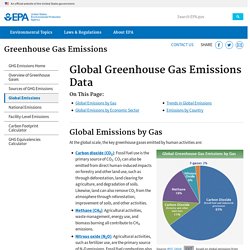
CO2 can also be emitted from direct human-induced impacts on forestry and other land use, such as through deforestation, land clearing for agriculture, and degradation of soils. Likewise, land can also remove CO2 from the atmosphere through reforestation, improvement of soils, and other activities. Black carbon is a solid particle or aerosol, not a gas, but it also contributes to warming of the atmosphere. Top of Page Global Emissions by Economic Sector Global greenhouse gas emissions can also be broken down by the economic activities that lead to their production.[1] Electricity and Heat Production (25% of 2010 global greenhouse gas emissions): The burning of coal, natural gas, and oil for electricity and heat is the largest single source of global greenhouse gas emissions.
Special Report on Climate Change and Land — IPCC site. Increases in global mean surface temperature are projected to result in continued permafrost degradation and coastal degradation (high confidence), increased wildfire, decreased crop yields in low latitudes, decreased food stability, decreased water availability, vegetation loss (medium confidence), decreased access to food and increased soil erosion (low confidence).
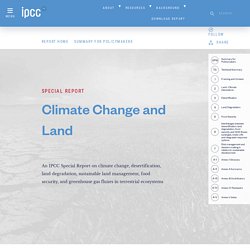
There is high agreement and high evidence that increases in global mean temperature will result in continued increase in global vegetation loss, coastal degradation, as well as decreased crop yields in low latitudes, decreased food stability, decreased access to food and nutrition, and medium confidence in continued permafrost degradation and water scarcity in drylands. Impacts are already observed across all components (high confidence).
Some processes may experience irreversible impacts at lower levels of warming than others. Agricultural Systems. Agricultural enterprises—crop or livestock—deal with such concepts as labor supply, marketing, finances, natural resources, genetic stock, nutrition, equipment, and hazards.
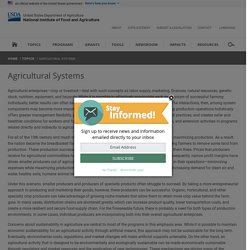
While it is possible to effectively manipulate each mechanism of successful farming individually, better results can often be obtained by treating the farming operation as a system. The interactions, then, among system components may become more important than how each component functions by itself. Treating production operations holistically offers greater management flexibility, provides for more environmentally and economically sound practices, and creates safer and healthier conditions for workers and for farm animals. Chapter 5 : Food Security — Special Report on Climate Change and Land. Globally, as the availability of inexpensive calories from commodity crops increases, so does per capita consumption of calorie-dense foods (Ng et al. 2014 ; NCD-RisC 2016a; Abarca-Gómez et al. 2017 and Doak and Popkin 2017).
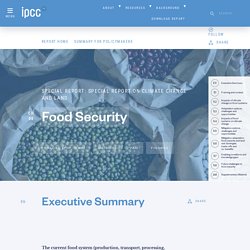
As a result, in every region of the world, the prevalence of obesity (body mass index >30 kg m–2) and overweight (body mass index range between normality [18.5–24.9] and obesity) is increasing. There are now more obese adults in the world than underweight adults (Ng et al. 2014; NCD-RisC 2016a; Abarca-Gómez et al. 2017 and Doak and Popkin 2017). In 2016, around two billion adults were overweight, including 678 million suffering from obesity (NCD-RisC 2016a; Abarca-Gómez et al. 2017). The prevalence of overweight and obesity has been observed in all age groups. Around 41 million children under five years and 340 million children and adolescents aged 5–19 years were suffering from overweight or obesity in 2016 (NCD-RisC 2016a.
Your food has a climate footprint. Here’s what you can do. Our diets are — to put it bluntly — a problem for the planet.
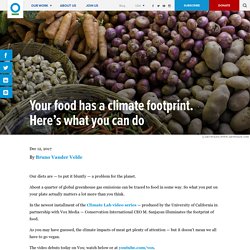
About a quarter of global greenhouse gas emissions can be traced to food in some way. So what you put on your plate actually matters a lot more than you think. In the newest installment of the Climate Lab video series — produced by the University of California in partnership with Vox Media — Conservation International CEO M. Sanjayan illuminates the footprint of food. As you may have guessed, the climate impacts of meat get plenty of attention — but it doesn’t mean we all have to go vegan. The video debuts today on Vox; watch below or at youtube.com/vox. It might just change the way you eat. Bruno Vander Velde is CI’s editorial director. Center for Sustainable Systems. Chart: The Carbon Footprint of the Food Supply Chain. View the high resolution infographic by clicking here.
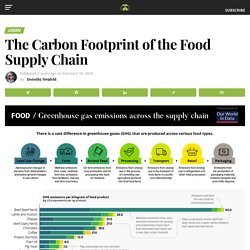
Against all odds, sustainable investing in the U.S. smashed records in 2020. Estimated net flows reached $20.9 billion in the first six months alone—that’s nearly equal to the amount of new money invested in all of 2019. What is driving the shift to sustainable investing? This visual dashboard from Raconteur explains five key drivers, from generational shifts to investors’ preferred strategies. Millennial Investors and Personal Beliefs Interest in sustainable investing is booming across the general population.
While the portion of each group that is “very interested” in sustainable investing has shot up since 2015, this share is significantly higher for millennials. Another correlated trend emerges with this. These days, investors are more likely to follow their conscience. Top Themes of Interest Powered by these personal beliefs, which categories are attracting investors? However, these aren’t the only considerations. Thank you!